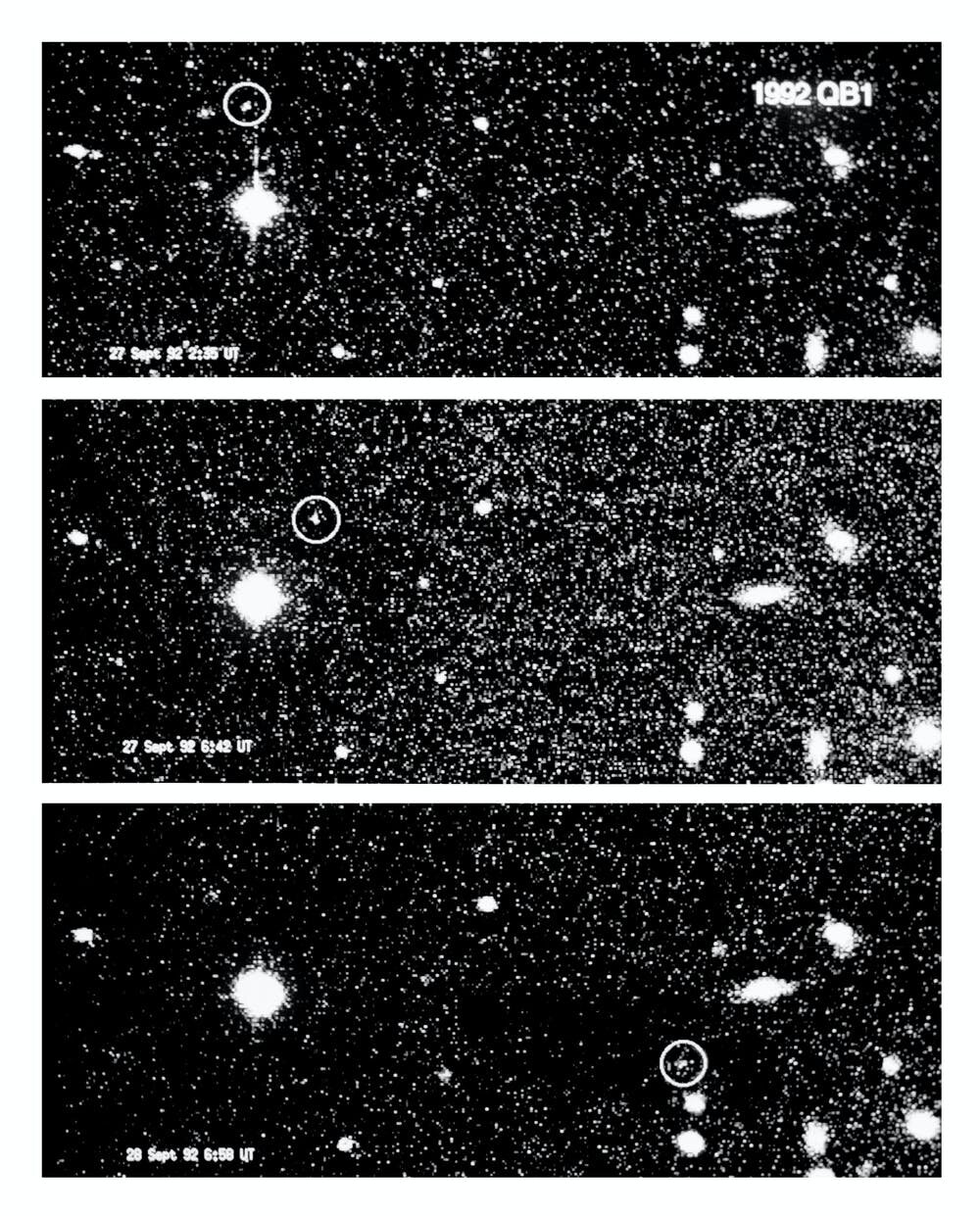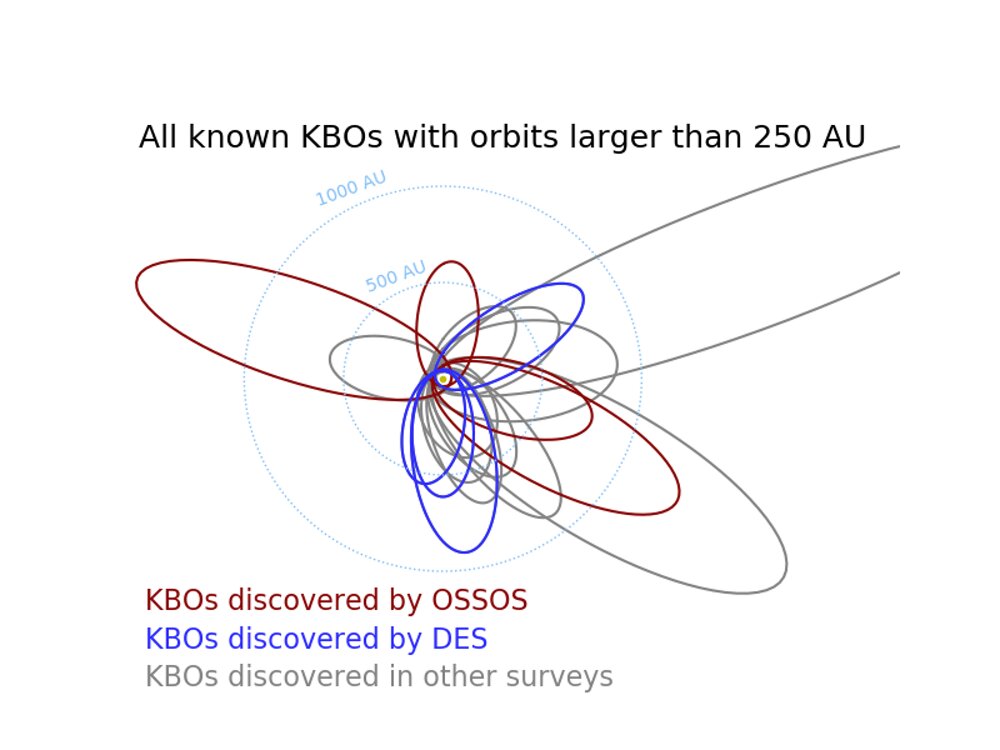Surely, many have heard of the Ninth planet, which has not yet been discovered, but has a great influence on the behavior of objects in the solar system. Some astronomers agree with this hypothesis and carefully scan outer space in search of the Ninth planet, others deny this hypothesis and give their evidence in favor of it.
Today I have prepared a translation of an article in which the existence of the Ninth Planet is denied, and arguments are given to this.
Enjoy reading!

The artist's idea of a hypothetical planet with a distant sun.
Planet Nine is a theoretical undiscovered giant planet in the mysterious far reaches of our solar system.
The hypothesis of the existence of the Ninth Planet explains everything from the tilt of the axis of rotation of the Sun to the apparent accumulation of small icy asteroids beyond Neptune in orbits.
But does Planet Nine really exist?
Discoveries at the edge of our solar system
The Kuiper Belt is a collection of small ice bodies that orbit the Sun outside Neptune at distances in excess of 30 AU. (one astronomical unit or AU is the distance between the Earth and the Sun). Kuiper Belt Objects (KBOs) range in size from large boulders up to 2000 km across. OPK is the remaining small pieces of planetary material that were not used to form planets, as well as the asteroid belt.
The discoveries made in the most successful Kuiper belt exploration to date, the Outer Solar System Origins Study (OSSOS), provide a more sophisticated explanation for the orbits we see. Many of these OPs have been found to have very elliptical and inclined orbits, such as Pluto's.
Mathematical calculations and detailed computer simulations have shown that the orbits that we see in the Kuiper belt can only be created if Neptune was initially formed by a few a.u. closer to the Sun and migrated outward to its current orbit. Neptune's migration explains the prevalence of highly elliptical orbits in the Kuiper belt and may explain all of the CMO orbits that we have observed, with the exception of a few CMOs in extreme orbits, which always remain at least 10 AU. beyond Neptune.

The second Kuiper belt object (after Pluto), 1992 QB1, was discovered in 1992 by American astronomers David Jewitt and Jane Luu using a 2.2-meter telescope at Mauna Kea in Hawaii.
Does this prove the existence of Planet Nine?
These extreme orbits are the best evidence for the existence of Planet Nine. The first few of them were discovered in only one quadrant of the solar system. Astronomers expect to see orbits with different orientations, unless they are limited by external force. The discovery of several extreme DICs in orbits directed in the same direction was a hint that something was happening. Two separate groups of researchers have calculated that only a large, very distant planet can hold all the orbits bounded by part of the solar system, hence the theory of the Ninth Planet was born.
According to the theory, the Ninth Planet is 5-10 times more massive than the Earth, and its orbit ranges from 300-700 AU. Several predictions of its location in the solar system have been published, but none of the search teams has yet discovered it. After four years of searching, there is still only indirect evidence in favor of the existence of the Ninth Planet.
DIC Search
Finding a defense industry requires careful planning, accurate calculations, and careful observation. I (Samantha Lawler) are part of OSSOS, a collaboration of 40 astronomers from eight countries. We have used the Canada-France-Hawaiian Telescope for five years to locate and track more than 800 new CMOs, nearly doubling the number of known CMOs with well-measured orbits. OPCs detected by OSSOS vary in size from a few to more than 100 km, and in terms of detection range, from a few to more than 100 AU, with most of them at 40-42 AU. in the main part of the Kuiper belt.
The defense industry does not emit its own light: these small ice bodies reflect only the light of the sun. Thus, if you move the OPK 10 times further, it will become visible 10,000 times worse. And by virtue of the laws of physics, MICs in elliptical orbits will spend most of their time in the most distant parts of their orbits. Thus, it is easy to find OPKs in elliptical orbits when they are close to the Sun and are bright, but they spend most of the time away, where they are less visible.
This means that OPOs in elliptical orbits are difficult to detect, especially extreme ones, which are always relatively far from the Sun. To date, only a few of them have been found, and with the help of modern telescopes, we can only detect them when they are near the pericenter - the closest point to the Sun in its orbit.
This leads to another difficulty that has historically been ignored in many studies: MICs in every part of the solar system can only be detected at certain times of the year. Ground-based telescopes are further limited by seasonal weather, with discoveries being less likely to occur during cloudy, rainy or windy conditions. OPK discoveries are also far less likely near the plane of the Milky Way galaxy, where countless stars make it difficult to find faint, icy wanderers.

All known defense complexes with orbits greater than 250 AU Orbits of the UIC detected by OSSOS and DES are located in many directions; previous studies with unknown biases have found them in the same direction.
Offset Correction
OSSOS found several new extreme DPCs, half of which are outside the bounded area and are statistically consistent with a uniform distribution. New research confirms OSSOS's nonclustered discoveries. A team of astronomers, using data from the Dark Energy Research (DES), discovered more than 300 new DICs without orbital clustering. So now two independent studies - both of which have carefully monitored and reported biases when extreme CPDs are detected - have not found any evidence of orbiting.
All extreme DPCs that were detected prior to OSSOS and DES were obtained from studies that do not fully report their deviations in direction. Thus, we do not know if all of these CPDs were found in the same quadrant of the solar system, because they are actually limited, or because no studies were searched deep enough in the other quadrants. We conducted additional simulations, which showed that if observations are made only in one season from one telescope, then extreme DICs will naturally be detected in only one quadrant of the solar system.
Further, checking the theory of the Ninth Planet, we examined in detail the orbits of all the known "extreme" DICs and found that all but the two highest DSCs in the pericenter can be explained by known physical effects. These two DPCs are abnormal, but our previous detailed computer simulation of the Kuiper belt, which included the gravitational effects of the Ninth Planet, produced a set of “extreme” DPCs with pericenters smoothly varying from 40 to more than 100 AU.
These simulations suggest that there should be a lot of OPC with pericenters as large as the two abnormal ones, but also a lot of OPC with smaller pericenters, which can be much easier to detect. Why do orbit discoveries not coincide with assumptions? The answer may lie in the fact that the theory of the Ninth Planet does not correspond to detailed observations.
Our careful observations have revealed CMOs that are not limited to Planet Nine, and our simulations show that the Kuiper belt must contain other orbits than we would see if Planet Nine did exist. Other theories must be used to explain extreme DICs with a high pericenter, and there is no shortage of proposed theories in the scientific literature.
There are many beautiful and amazing objects yet to be discovered in the mysterious outer solar system, but I do not believe that Planet Nine is one of them.